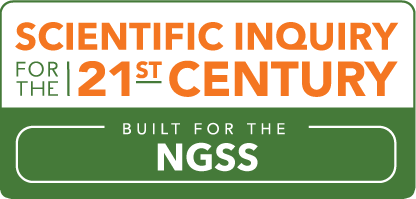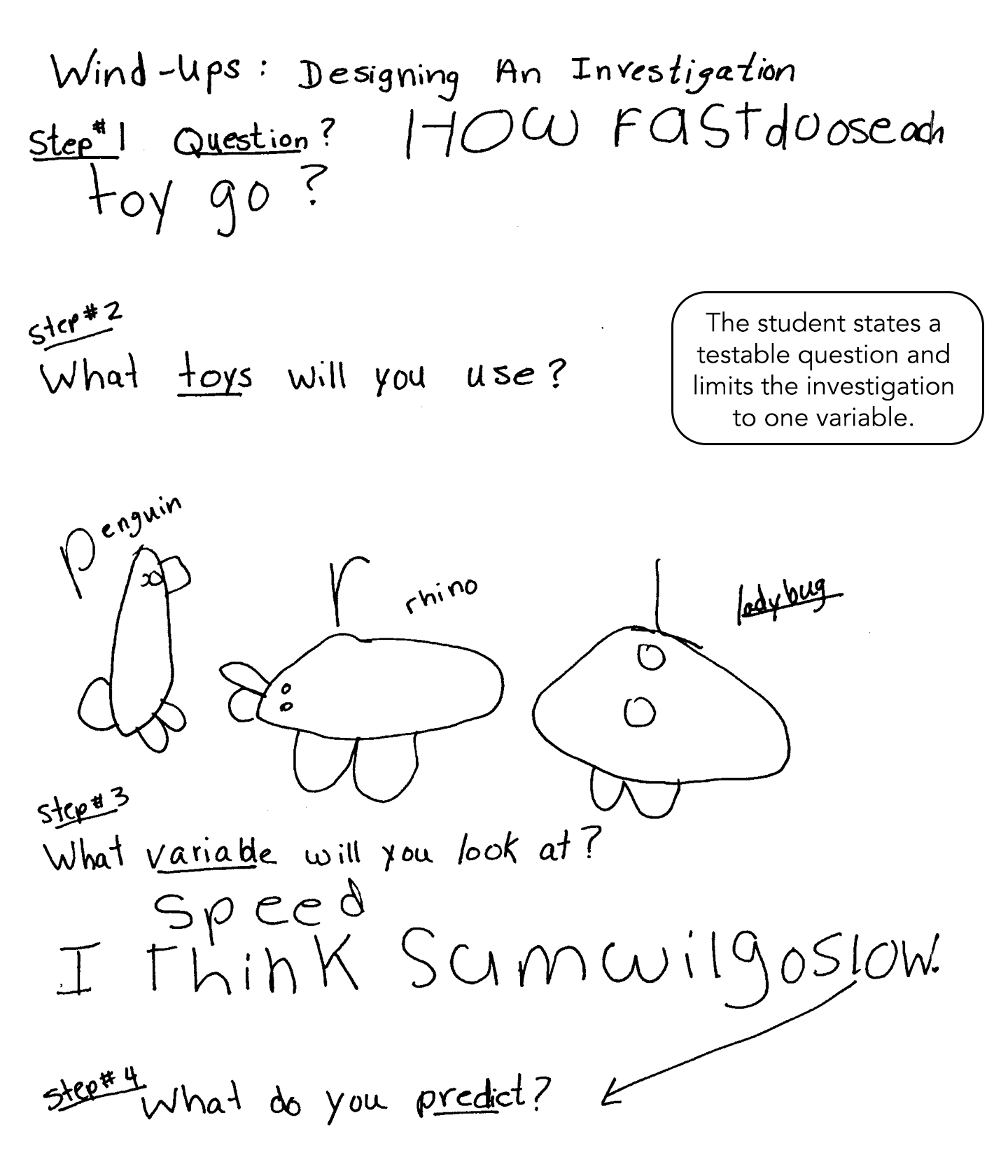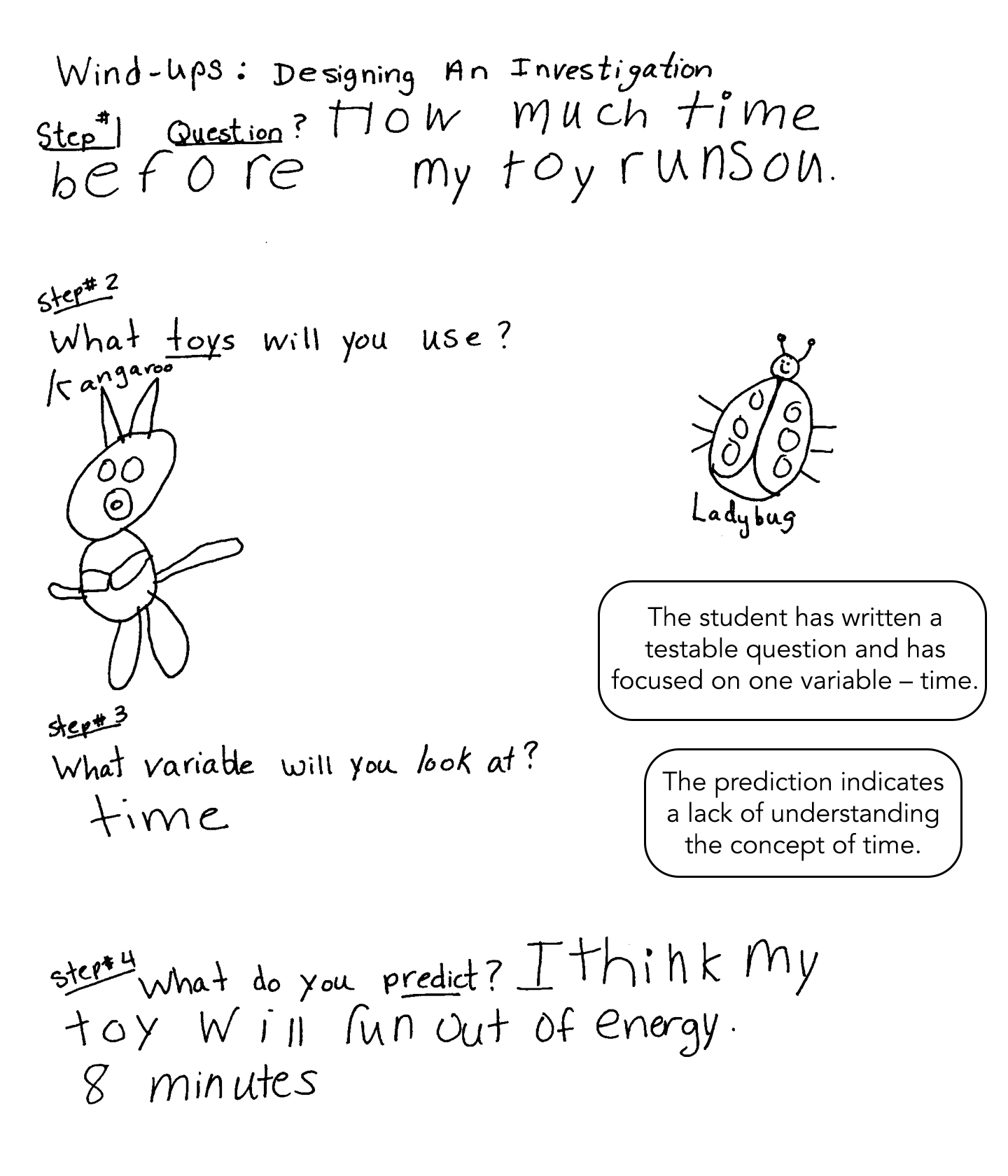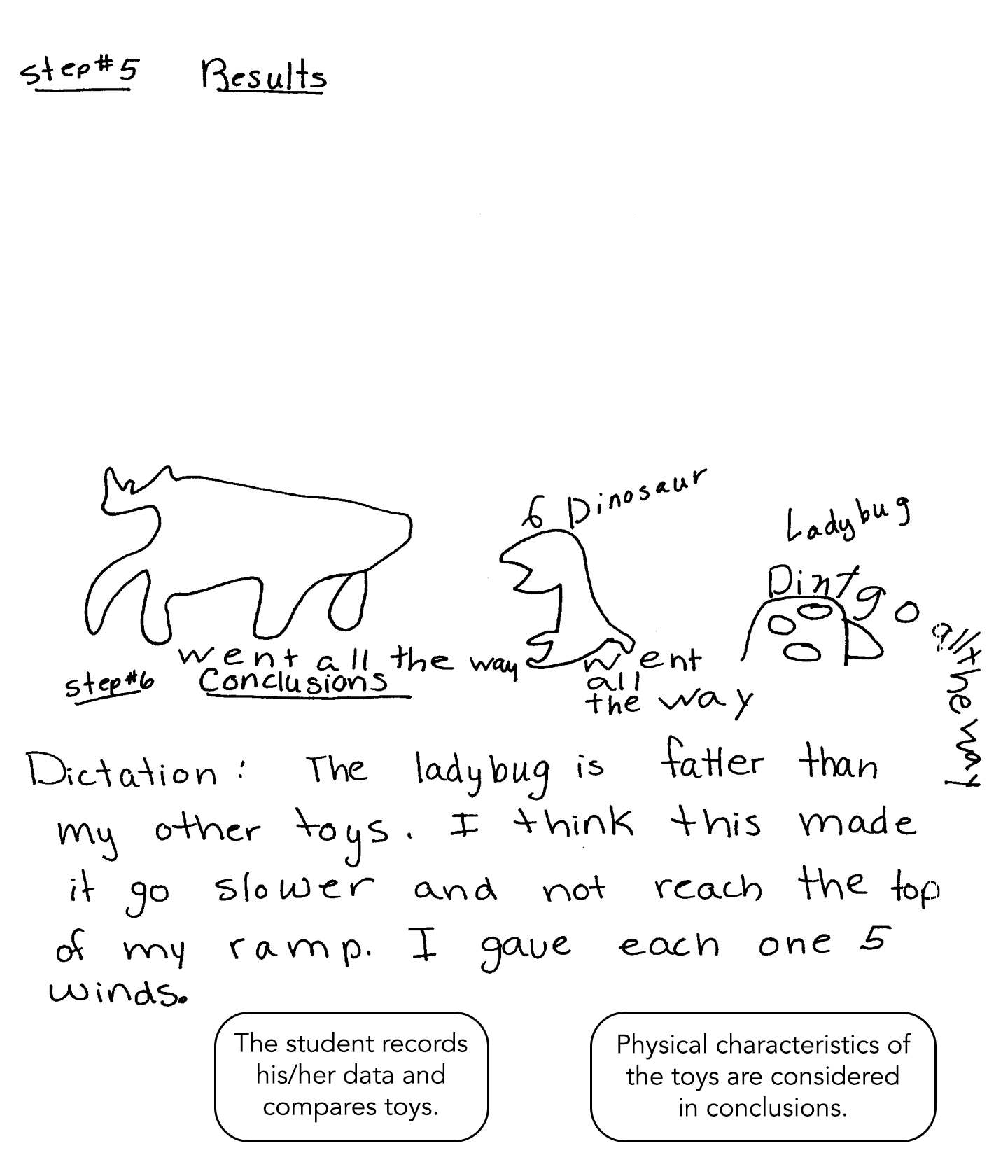Wind-Up Toys, Part 2: Can I Design an Investigation?
We have spent time exploring wind-up toys, making predictions about and observing how each one moves. Now, can you design an investigation? First, you will choose one thing to test. Remember, everything else has to stay the same (like how many times you wind it up). We want to be sure that this is a fair test.
You will:
- Ask a testable question.
- Choose the toys you will use to test your question.
- Say what variable you will test (like the time, the distance or the direction it goes).
- Make a prediction: What do you think will happen? Use what you have already learned to make your predictions.
- With your partner, try out each toy and observe it carefully.
- Write your results: What did each toy do?
- Use your results to make a conclusion. Try to use some science and math words ("energy," "speed," "distance," "seconds," "inches," "faster/slower," "ramp," etc.).
Approximately 60–90 minutes (over one or two consecutive days).
Instructional Support Downloads
Suggested materials
You need a variety of wind-up toys with different motion features and speeds of movement. I discovered that it was hard to find wind-up toys in the springtime (they are rare). It is best to look for them during holiday shopping time from November through January. I also hunt at garage sales and flea markets over the summer to keep the cost under $3.00 apiece.
It would be ideal to have at least one toy per child to start with, so children can exchange and easily try out three different toys during a 60-minute activity, or to share with partners. (I started with 16.) I also encouraged the children to bring in wind-up toys to share and explore for our unit. I did have a few rules for handling the toys: do not wind more than five turns; do place the toy gently on any hard surface; if the toy is not the teacher’s, ask the owner first to borrow it; and return toys gently to the tub when done.
Students will also need a recording sheet. I use a large chart to walk students through how to respond on their recording sheets. This is available throughout the activity to help students with spelling and to provide appropriate examples for them.
Task Menu Quick Links
Exemplars Rubrics
This was the first time I had asked my first graders to design their own investigation based on what they had learned from the previous two weeks of observations with the wind-up toys. This is an example of what might be expected from young children, after they have expanded scientific/mathematical skills, scientific concepts, problem-solving strategies, communication skills, risk-taking and confidence in themselves as scientific investigators.
Wind-up toys work by turning a knob or key. The toys then operate on the energy that is stored in a spring. Take apart a toy to see how it works, if you have a spare. Ask the children what changes they see when it runs down. Even though the children are working with partners to share the wind-up toys, each child was asked to complete a recording sheet that demonstrated five to six steps in the designing of an individual wind-up toy investigation.
Step 1: Essential question
Step 2: Drawing and labeling of three toys used
Step 3: One variable to look at
Step 4: Prediction(s)
Step 5: Results
Step 6: Conclusion(s)
Note: It might help to know the following data about each wind-up toy from the collection that we used. The speed and time descriptions were based on earlier observations after all the toys had been wound five times by an adult.
| Toy | Speed | Path | Time |
| Ladybug | Slow | Circle | 13 seconds |
| Penguin | Slow | Zigzag | 1 minute |
| Turtle | Medium | Straight | 10 seconds |
| Dinosaur | Slow | Straight | 30 seconds |
| Praying mantis | Fast | Straight | 32 seconds |
| Robot | Slow | Straight | 28 seconds |
| Dog | Fast | Straight | 2 seconds |
| Kangaroo | Fast | Straight/Flips | 15 seconds |
| Rhino | Fast | Zigzag | 15 seconds |
In the task "Wind-Up Toys, Part 1: What Can I Learn From Observing?" benchmarks were assessed by looking to see (1) if the question was clearly stated and that the child chose the same three toys for the prediction and recording of results, (2) if the child picked one variable to look for during each wind-up test and if the predictions and results were close and accurate and (3) if the child made at least one accurate conclusion at this age level. It is also important to look for children's use of prior knowledge and earlier information gathered from earlier their wind-up toy explorations.
The student’s solution is lacking in some of the explanations and in accurate observations, but the task is completed. There is a scientific question to test. The prediction is not organized but is clear. The results are labeled, but the results of some tests are erroneous (e.g., the rhino moves fast). This makes the conclusion not completely accurate. No tool (clock) is used for data collection. Conclusions are vague and general, lacking any comparison (all are “slow”). The student is able to gather and use most of the data which demonstrates understanding and reasoning in designing the task.
The student’s solution is lacking in appropriate details, and the strategies lack scientific reasoning. There is a good scientific question. The variable being looked at is “time,” and data are recorded using appropriate tools. The student does not use prior knowledge to predict when the toys would stop. All the toys ran out in less than one minute, and the student predicted eight minutes. This shows that the student does not understand the concept of time in making the prediction. There is some evidence of understanding and use of data because the student concluded that the toys ran out of energy quickly.
The student designs a task that investigates using a ramp, which had not been modeled during the previous two weeks. This shows a connection to earlier investigations with our cars and ramps unit. The student’s questions match the variable and tool that are selected. The prediction is based on prior experiences with the wind-up toys. The conclusions are stated through dictated sentences and provide evidence of more complex thinking and reasoning, as well as an effective use of tools to test the question. The student’s solution could have been strengthened by showing a ramp in the observations/drawing.
The student asks a different question to design the investigation. The student wants to test the direction the toy would go in. (Refer to the chart of statistics.) The predictions are clear; the same three toys are tested. The descriptions are accurate and detailed. The dictated sentences provide evidence of using prior knowledge and scientific reasoning. The conclusions support excellent observations about how the toys are made and work differently. The student shows evidence of noticing details and function.










